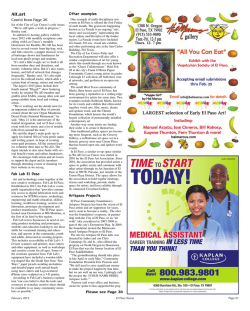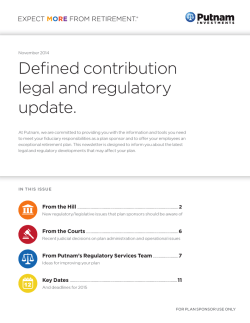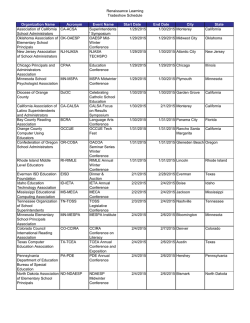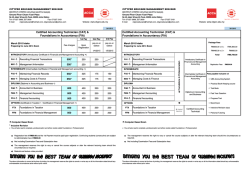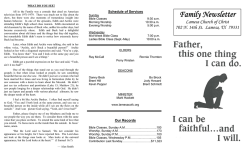
Final Regulations for Annual Funding Notice
Volume 38 | Issue 20 | February 3, 2015 Final Regulations for Annual Funding Notice Final regulations from the DOL on the annual funding notice required of PBGC-covered singleemployer and multiemployer plans replace previous guidance in field assistance bulletins and proposed regulations. The final rules are effective for plan years beginning in 2015; plan administrators can choose to implement new model language for 2014 years or retain their previous compliance approach. In either case, addendum language for MAP-21 and HATFA is handled independently. Background The Pension Protection Act of 2006 (PPA) amended the ERISA disclosure requirements to require all multiemployer defined benefit pension plans and all single-employer defined benefit pension plans that the PBGC insures to provide an annual funding notice to participants, beneficiaries, and others. PPA moved the funding notice due date for all plans (except plans with 100 or fewer participants) to 120 days after the end of the plan year. It also eliminated the Summary Annual Report requirement for plans that are required to provide the new funding notice and substantially expanded the information that the notice must contain. In 2009, the DOL issued Field Assistance Bulletin (FAB) 2009-01 to explain how the DOL would enforce the Section 101(f) funding notice requirement in the absence of final regulations. In the FAB, the DOL advised its staff to treat plan administrators as satisfying the requirements of the law if the administrator complied with the guidance contained in the FAB and acted in accordance with a good faith, reasonable interpretation of the requirements for matters not covered by the FAB. This guidance was followed in 2010 with proposed regulations. Further refinements came in FAB 2013-01 to address additional disclosure requirements stemming from the MAP-21 changes. Most recently, FAB 2015-01 addressed the HATFA modifications to MAP-21. We provided descriptions of the earlier guidance in our December 14, 2010, March 11, 2013, and January 16, 2015 For Your Information publications. 1 Volume 38 | Issue 20 | February 3, 2015 Final Regulations for 2015 Plan Years What are Flesch-Kincaid readability scores? Readability tests were developed for the US Navy in 1975 by J. Peter Kincaid and Rudolf Flesch. The scores measure the difficulty in comprehending technical documents and aid writers in making those documents more accessible. The tests measure the average number of syllables per word and words per sentence and yield scores for readability (on a scale from 1 to 100, with 100 being the easiest to read). A grade level test assesses comprehension based on US school grade ranks. Final DOL regulations generally follow the agency’s proposed rules with few refinements. The rules will be effective March 4, 2015 and will apply for plan years beginning on or after January 1, 2015. Thus, the first affected AFNs for calendar plan years will be those due for distribution for large plans on April 30, 2016. However, one of the key changes advanced by the DOL was an effort to improve the readability of the notices by substituting short sentences and other changes. The aim was to improve Flesch-Kincaid readability scores that measure how easy or difficult a communication piece is to understand. The new models also provide an alternative for reporting the allocation of plan assets to investment categories so that only broad classifications (e.g., stocks or investment grade debt instruments) used for Form 5500 Schedule R could be used rather than more specific ones from Form 5500 Schedule H as provided in previous guidance. So plan administrators interested in improving the communication of this funding information to plan participants may want to consider implementing the new notices earlier, if practicable. MAP-21, HATFA and MPRA The final regulations do not fold in the temporary reporting requirements imposed by MAP-21 and HATFA. The DOL advises plan administrators to continue using the guidance from FAB 2013-01 and 2015-01. The final regulations do reflect changes to the notice requirements made by MPRA for multiemployer plans in critical and declining status. “Current Year” Change with Material Effect One somewhat controversial issue raised by the proposed rule had been whether the requirement to disclose information about changes in the “current year” if they occur more than 120 days before the due date for furnishing the AFN. Some practitioners had questioned whether “current year” refers to the year being reported by the AFN or the year in which it is provided. DOL stuck with its view of reporting on changes in the year in which the AFN is reported. However, the definition of “taking effect” was modified to mean the date the event takes effect for funding purposes. As a result, the need for reporting will need to consider factors such as the election in the funding rules to accelerate recognition of an amendment. Issue of Revised or Corrected Notices The DOL did not include specific guidance on differences between amounts disclosed on an AFN and amounts that subsequently appear in the Schedules SB or MB for the plan year. DOL said that there is no obligation to provide a revised AFN in cases where the original AFN was prepared in good faith. An explanation of the difference, if material, could be provided with next year’s AFN. In Closing DOL’s final regulation offers plan administrators guidance to evaluate with their actuaries in assessing the content of the plan’s AFN for plan years beginning on or after January 1, 2015, or earlier at their option. 2 Volume 38 | Issue 20 | February 3, 2015 Authors Marjorie Martin, EA, FSPA, MAAA Jay P. Rosenberg, EA, FSA, MAAA, FCA Produced by the Knowledge Resource Center of Buck Consultants at Xerox The Knowledge Resource Center is responsible for national multi-practice compliance consulting, analysis and publications, government relations, research, surveys, training, and knowledge management. For more information, please contact your account executive or email [email protected]. You are welcome to distribute FYI® publications in their entireties. To manage your subscriptions, or to sign up to receive our mailings, visit our Subscription Center. This publication is for information only and does not constitute legal advice; consult with legal, tax and other advisors before applying this information to your specific situation. ©2015 Xerox Corporation and Buck Consultants, LLC. All rights reserved. Xerox® and Xerox and Design® are trademarks of Xerox Corporation in the United States and/or other countries. Buck Consultants®, FYI®, and For Your Information® are trademarks of Buck Consultants, LLC in the United States and/or other countries. 3
© Copyright 2025

